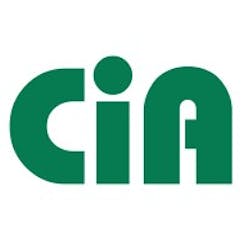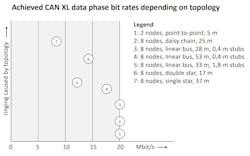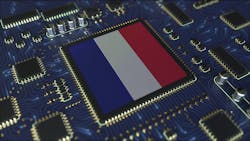3rd CAN XL plugfest connects in Michigan
In April, the 3rd CAN XL plugfest, organized by the CAN in Automation (CiA) international users’ and manufacturers’ group took place in Troy, Michigan. CAN XL is the 3rd controller-area-network (CAN) protocol generation. On the plugfest, intellectual-property (IP) core implementations from Bosch, Kvaser and Vector were tested on interoperability. On the 2nd CAN XL plugfest in 2022, a micro-controller prototype from NXP and an IP core from Fraunhofer/Cast were already successfully tested.
In the afternoon session, different topologies were used. Point-to-point and linear networks with short unterminated stubs achieved a data phase bit rate of up to 20 Mbit/s.
The arbitration bit rate was 500 kbit/s. The connected nodes used CAN signal improvement capability (SIC) XL transceivers from Bosch, Infineon, NXP and Texas Instruments.
The achieved results are shown in Figure 1.The day after the plugfest, CiA held a CAN XL technology day. The speakers introduced the CAN XL ecosystem, and several CiA members, including Bosch, C&S Group,
NXP and Vector, showed demonstrators; oscilloscopes with CAN XL decoder and trigger functionality were demonstrated by Keysight, Rohde & Schwarz and Teledyne. The presentations covered base information on protocol and physical transmission, as well as network design hints and embedded security such as CANsec.CiA plans a similar event during CAN XL Technology Day on June 22 near Paris (Figure 2).



